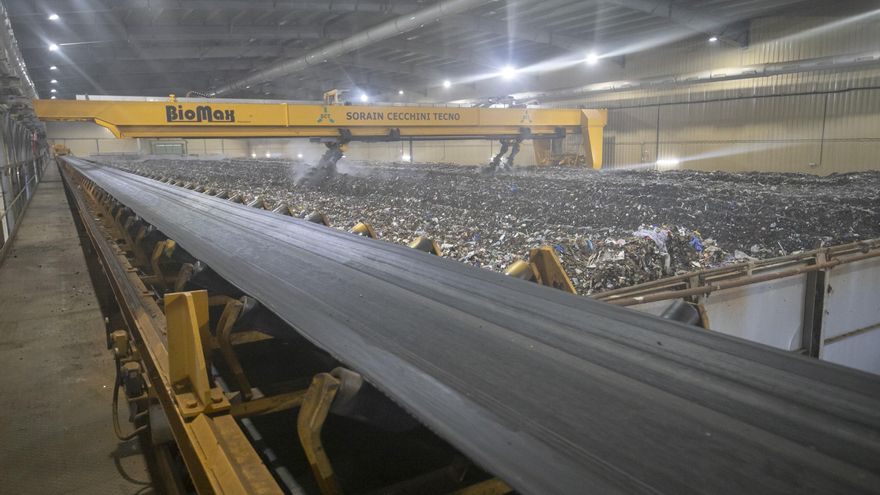
The new biostabilization plant for the Tenerife Environmental Complex It will treat, from now on, more than 76,000 tons of waste each year after updating the facilities, thus avoiding that the garbage has to be buried.
The President of the Council, Peter Martintogether with the director of the Area of Sustainable Development and the Fight against Climate Change, Javier Rodríguez Medina, visited this Friday the facilities of the biostabilization plant, “which were in a dilapidated state and with production stopped since 2018”.
The president indicated that the council “has invested more than 1.5 million euros in fine-tuning this facility to be able to start it up again and stop burying a large amount of waste that can later be used for some uses in agriculture, gardening or road maintenance , and thus avoid continuing to bury and occupy territory in Tenerife with materials that, after all, are resources or raw materials”.
Pedro Martin stressed that the reactivation of this installation is a very big advance and comes to complement other actions that are being worked on in waste management, such as the packaging plant or some new initiatives in which private companies will come to give garbage a new opportunity, as is the case of the award of another plot in the complex for the installation of recycling industries in Tenerife.
“This is the start and with it we make it easier for municipalities to implement the fifth container,” said Pedro Martín, who recalled that in the case of Santa Cruz and Granadilla there are already pilot projects for buckets only for organic matter. In addition, he reinforced the idea that if organic matter is collected at source, the environmental impact generated by garbage will be reduced. “But for this we need the strong support of the municipalities,” he added.
For his part, Javier Rodríguez pointed out that one of the priority objectives of the Island Corporation, in terms of waste management, was to reactivate this plant, since “it makes no sense that a territory with a vocation for conservation is allowing itself a break energy such as burying waste that can be recovered and converted into resources”.
“We live with a technological development that allows us to give rise to the circular economy, and we are committed to that path, and the start-up of this plant is an example of it, that of reactivating a warehouse that had been closed since 2018 due to structural pathologies” , he added.
The biostabilization plant will be able to treat 76,000 tons/year of organic matter from the gray container, which will generate a biostabilized material with application in improving the structure of agricultural soils, gardening, slope conservation, etc., which translates into approximately 6,300 tons per month, which when passing through this plant will no longer be buried in the discharge cells.
The improvement work that has been carried out has cost 1,189,760 euros and the intervention consisted of dismantling the existing structures, including the roofs and replacing the enclosures with new ones; reinstallation of water distribution pipes; reinstallation of electrical panels; reinstallation of ventilation ducts; signs; installation of a booth for the office and installation of fire extinguishing systems.















